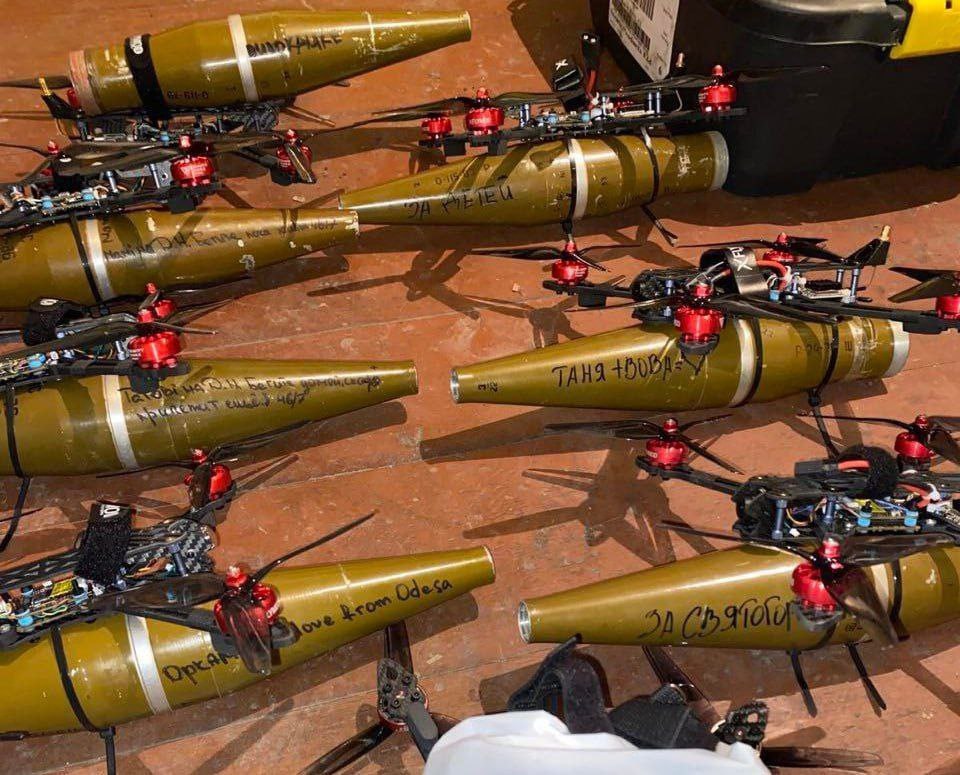In the ongoing Russia-Ukraine war, FPV drones (First-Person View) have been substantially utilized by both sides, with such drones being equipped with improvised warheads to effectively target armored vehicles, fortifications, and the personnel within them.
With Eye On China, Pakistan Air Battles, India Forward Deploys Its LCA Tejas Fighters For Ultimate Clash
The successful usage of these UAVs appears to have led Moscow to develop and implement an electronic defense system on Russian tanks to safeguard them from FPV drones.
Ria Novosti’s report on August 16 stated that the “Triton” electronic defense system against FPV drones was developed within the specialized entity “PPSh Laboratories” for Russian tanks.
According to the report, the Triton FPV drone protection system has been integrated with a Russian tank for the first time.
During the Army-2023 forum, a prototype of the “Triton” electronic protection system was showcased on the T-72B3M tank, displayed at the exposition of armored vehicles of the Russian Ministry of Defense.
“The product is intended for disrupting the control channels and data transmission of FPV drones,” as indicated by Triton’s description at the booth. The system functions across four frequency ranges: 868, 915, 1300, and 2400 MHz.

Moreover, the Triton can be managed via remote control and can draw power autonomously from its own battery or the tank’s onboard network.
The heightened relevance of combatting First-Person-View (FPV) drones in their aggressive configuration has experienced a significant surge, particularly in the ongoing Ukraine war.
This could be linked to the exponential proliferation of FPV drones in the modern landscape of conflicts. The report said that Russian tanks were originally ill-equipped to counter the pervasive threat these FPV drones posed.
In addition to representing a massive danger to tanks, these UAVs have also been observed effectively singling out enemy soldiers and hitting them with pinpoint accuracy.
Dubbed “kamikazes” by Ukraine’s defense ministry, these drones are characterized by their self-destructive nature, as the warhead they carry leads to the drone’s destruction upon impact.
For example, a recent video making rounds on the internet portrayed a situation where Ukrainian soldiers endeavored to take cover from an FPV drone within a garage; however, this effort proved futile.
The sabotage group of the Armed Forces of Ukraine tried to hide from the FPV drone in the garage. pic.twitter.com/9VZ02d9B2h
— Sprinter (@Sprinter99800) August 14, 2023
The drone trailed the soldiers and entered the garage amidst parked vehicles, resulting in the catastrophic demolition of a residential structure and subsequently igniting a fire.
The Proliferation Of FPV Drones In Ongoing War
An FPV drone is operated by a remote controller and equipped with virtual or augmented reality glasses. This setup allows the real-time transmission of the drone’s camera feed to these glasses.
Consequently, the drone operator experiences a perspective akin to being onboard the aircraft.
In a combat-oriented variation, these drones are predominantly outfitted with either armor-penetrating warheads designed to neutralize armored vehicles or high-explosive fragmentation payloads tailored to destroy fortifications and personnel.
However, FPV drones require a proficient remote pilot and are specifically engineered to excel in swiftness and agility. They possess the capability to hover in a stationary position as well as traverse through the air.
Notably, Ukrainians innovated homemade iterations of these munitions, a concept that the Russians later adopted.

These drones are constructed by volunteers or soldiers, employing components acquired through fundraisers. The inherent simplicity of the electronic systems and the utilization of commercially available parts contribute to their cost-effectiveness.
A single Pegasus attack drone, produced in Ukraine, carries a price tag of around $341 to $462. In contrast, the larger and more sophisticated SwitchBlade drones, provided to Ukraine by the United States, which carry compact anti-personnel warheads, command a significantly higher cost of around $52,000 or more each.
The economic nature of FPVs compensates for their relatively modest success rate in terms of target destruction. Operators attribute their success rates to fall within the range of 50% to 80%.
While FPV drones may not possess an extensive operational range, their real-time video feed to the operator’s goggles allows them to extend beyond the visual line of sight, effectively engaging targets concealed behind obstacles such as trees, buildings, ridges, or even trenches.
This unique characteristic positions them as a potential complement to artillery offensives. Furthermore, attempts to electronically disrupt their functionality are challenged, as they rely on analog video signals for operation at lower altitudes, rendering them less susceptible to electronic countermeasures.
- Contact the author at ashishmichel(at)gmail.com
- Follow EurAsian Times on Google News




